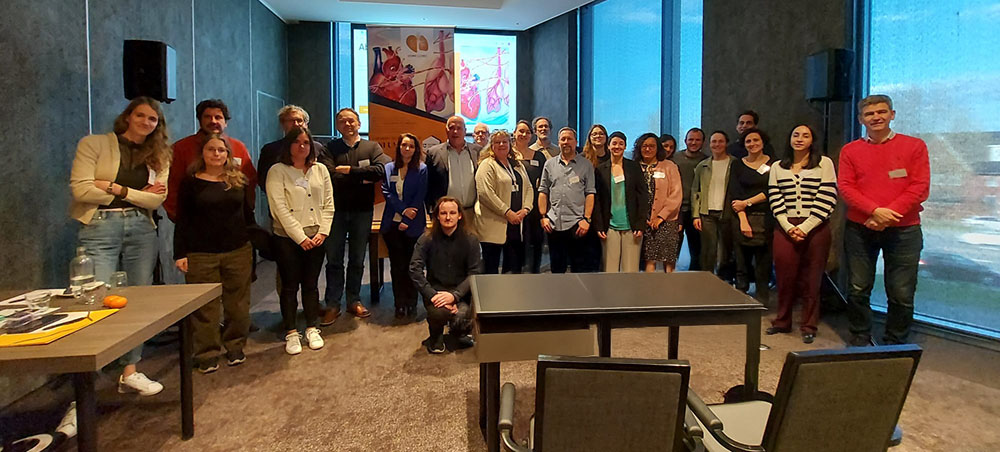On 1–2 April 2025, the full Homi-Lung consortium gathered in Nijmegen for a two-day project meeting hosted by the partner Radboud University. With representatives from the partner institutions, the meeting was a key milestone for scientific exchange, strategic coordination and project alignment across the seven work packages.
The event opened with Prof. Antoine Roquilly, project coordinator and Professor of Intensive Care Medicine and Chair at Nantes University Hospital. He welcomed participants and encouraged all teams to maintain strong collaboration as the project enters a critical phase. As he noted in his introduction, “This meeting shows how far we’ve come and how much we can achieve by working together. The months ahead will be decisive for translating our findings into clinical relevance”.

Coralie Errera (Nantes University) followed with an update on WP1 (Management), including upcoming milestones and the technical reporting timeline. Coordination between partners and timely data integration remain a key priority.
In the session dedicated to WP2 (Cohorts & Biobanking), Dr. Melina Nikolakea (HISS) reported on the CAP cohort, while Prof. Roquilly provided an update on HAP patients recruitment in France. Together, they confirmed that over 80 patients have already been enrolled across sites, with biobanking activities progressing efficiently.
The WP3 (Immunopathology) session featured several speakers: Prof. Irit Gat-Viks (Tel Aviv University) shared progress on biomarker identification; Prof. Morgan Magnin (Nantes University) presented a dynamic model design to analyse acute phase responses; Dr. Tony Ribeiro (Nantes University), a computer science expert, presented preliminary results on artificial intelligence algorithms with predictive value; and, Prof. Véronique Sebille (Nantes University) summarised the status of interviews conducted as part of shared activities between HOMI-LUNG and HAPDEX studies. Together, these insights are helping build a more nuanced understanding of immune response and its long-term effects after pneumonia.
Prof. Mihai Netea and Dr. Athanasios Ziogas (Radboud University) opened the WP4 (Patient Stratification) session by exploring host–microbiome biomarkers for predicting CVRD progression. Dr Adrien Saliou (Bioaster) followed with an overview of metagenomics and upcoming data processing actions. The WP4 work is building a multidimensional patient stratification model that integrates omics, clinical and imaging data.
The WP5 (Clinical Trials) update was presented by Dr. Thomas Goronflot (Nantes University), who focused on the start of data analysis from trials such as SAVE-LONG and ENIRRIs. Despite some seasonal slowdowns in patient recruitment, the trials remain on track and are expected to yield results later this year.
Dr Cedric Jacqueline (Nantes University), representing WP6 (Causal Inference), explained the team’s approach to untangling the complex links between pneumonia and cardiovascular complications using both statistical tools and experimental models. Dr Robert Dickson (University of Michigan) complemented this with an overview of microbiome/bacterial metabolites and epithelial leak during pneumonia, offering new insights into potential causal mechanisms. Prof. Antoni Torres (IDIBAPS-FRCB) explored the pre-clinical studies and animal model challenges and opportunities to measure aligned biological markers in patients and animal studies.
Finally, Dr Laia Fernández-Barat (IDIBAPS-FRCB) presented the current and upcoming activities from WP7 (Communication & Dissemination). She emphasised the importance of keeping communication channels active with regular content updates, and encouraged all partners to share news, publications and relevant events. The session also highlighted the value of involving early-career researchers in science communication efforts.
The meeting concluded with an open discussion and a renewed sense of momentum. As the Homi-Lung project continues to unravel the complex interplay between pneumonia and cardiovascular disease — employing a multidimensional approach from DNA methylation to the patient scale — the collaborative energy displayed in Nijmegen will be key to achieving both scientific and clinical impact.

